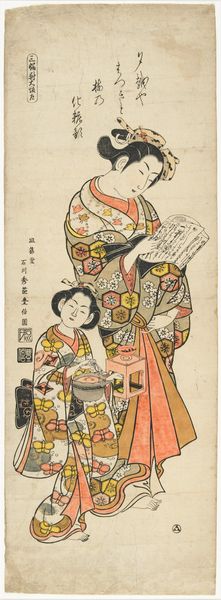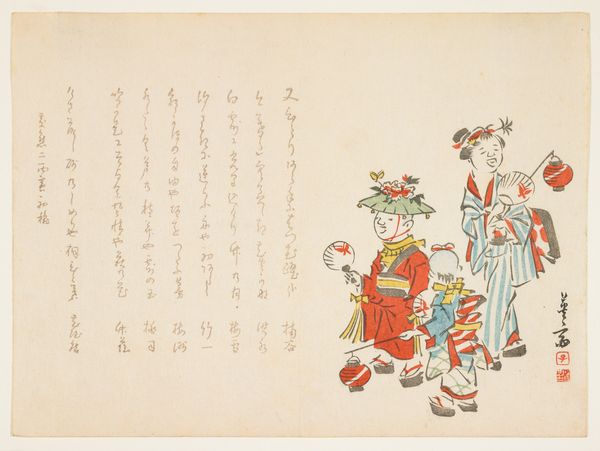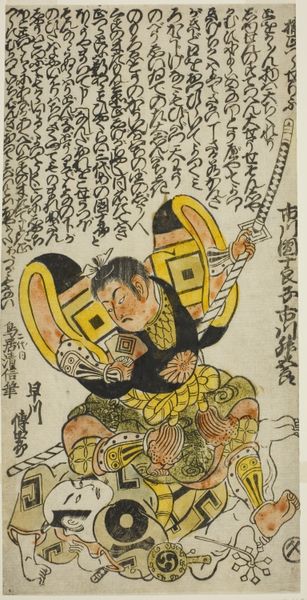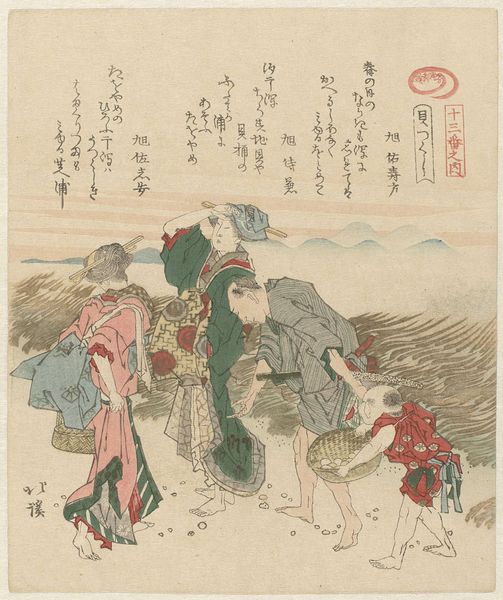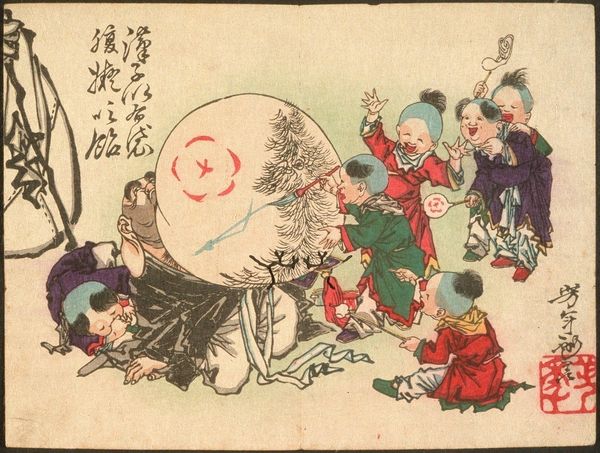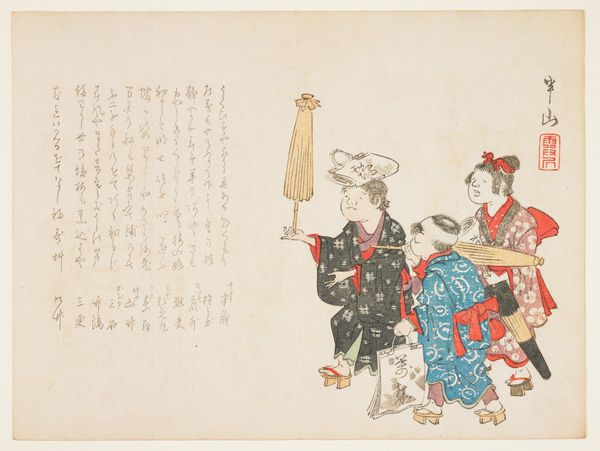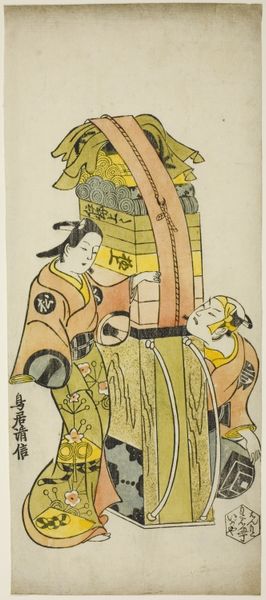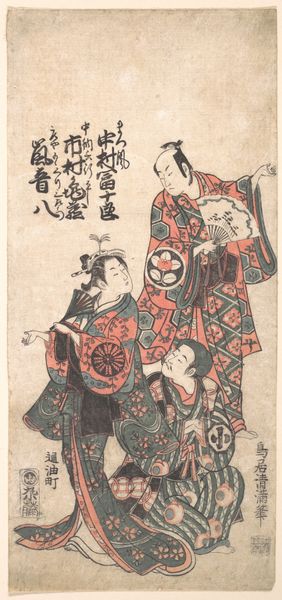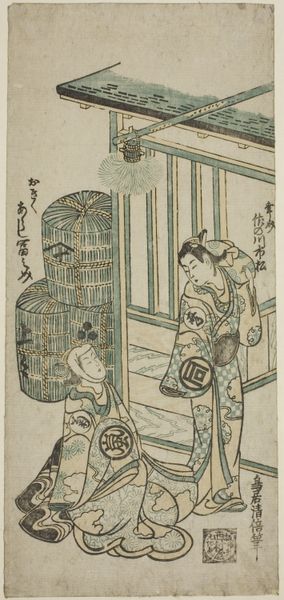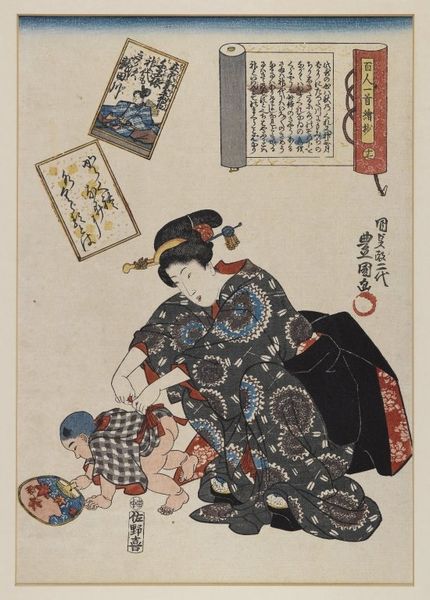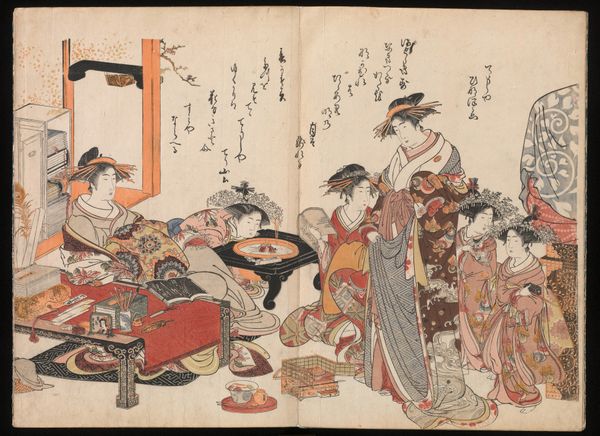
print, woodblock-print
#
narrative-art
# print
#
asian-art
#
ukiyo-e
#
figuration
#
woodblock-print
#
genre-painting
Copyright: Public domain
Curator: Welcome! This vibrant woodblock print, attributed to Keisai Eisen, is titled "Daikoku, Ebisu, and Fukurokuju Counting Money." It depicts these three figures surrounded by stacks of what appear to be sake barrels and piles of loose coins. Editor: My first impression is one of jovial abundance. The color palette is somewhat muted, yet the expressions on the figures' faces radiate glee. It seems a celebration of wealth, painted with gentle humor. Curator: Indeed. Look at the masterful use of line throughout the composition. The flowing robes, the texture of the barrels, the individual coins—all rendered with incredible detail and precision. Notice how the artist balances areas of dense pattern with quieter, more open spaces. Editor: And observe how that 'abundance' is not necessarily benign. We see representations of gods of fortune participating in what is fundamentally a commodification process. Perhaps the piece critiques the uncritical worship of wealth within the growing merchant class during the Edo period, a time when traditional hierarchies were increasingly challenged. Are these figures caricatures, rather than pure representations of benevolent deities? Curator: An interesting proposition. While such an interpretation may be valid, consider the composition itself. The careful arrangement of the figures, forming a sort of triangle, leads the eye throughout the piece. Even the calligraphic elements above the figures enhance the design by leading our eye upwards, contrasting against the angular structures below. Editor: The artist, through what might seem like harmless imagery, subtly participates in the socio-political discourses of the time. Perhaps the positioning of these deities—immersed in what seems almost a warehouse filled with monetary wealth—implies they have themselves been 'possessed' or 'owned' by mercantile values and capitalism? Curator: It's a compelling angle. Certainly, there's much here to contemplate, about wealth, religion, and their entwined narratives in the artwork’s historical setting. Editor: Absolutely, a view into a past ever present today.
Comments
No comments
Be the first to comment and join the conversation on the ultimate creative platform.
